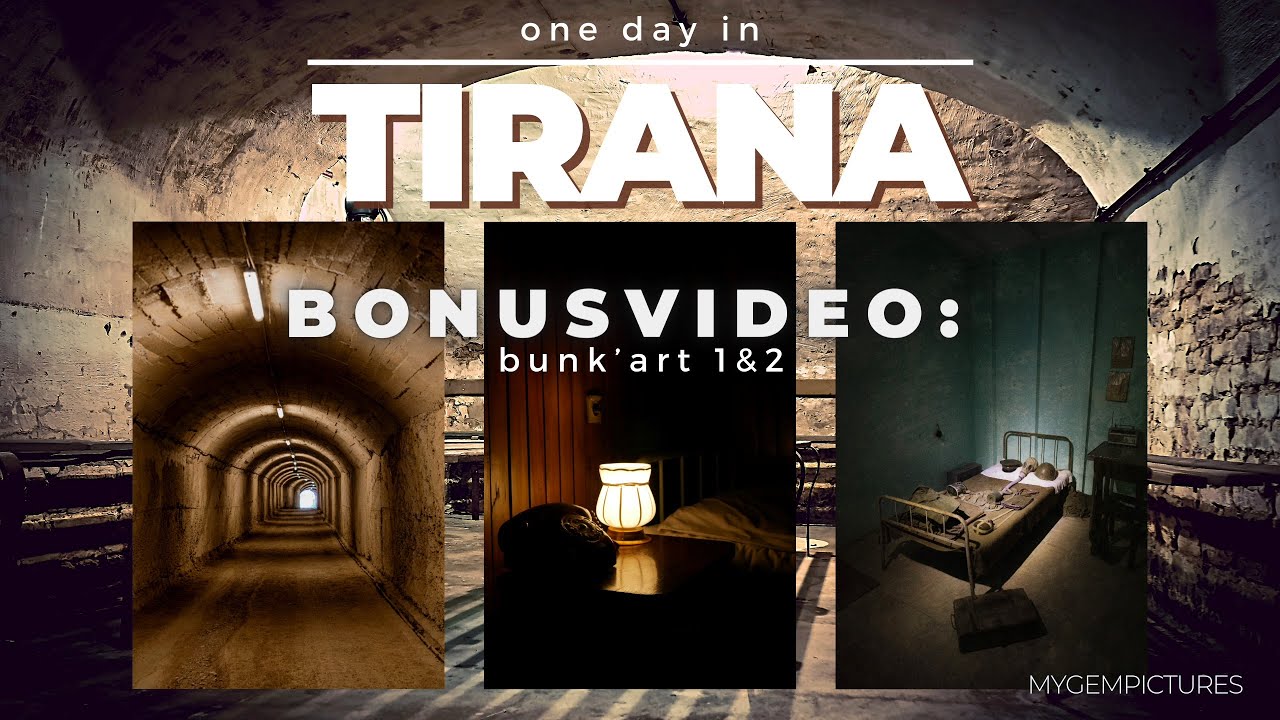
Hidden beneath the earth of TIRANA: Insights into a former secret nuclear bunker

They stand for fear, paranoia and dictatorship. The bunkers of Albania.
After World War Two, Albania became a Stalinist state under dictator Enver Hoxha. Under his repressive rule, Albania was isolated from the rest of the world and the life of the population was controlled by the regime.
In the 1970s Hoxha started the “bunkerization“. Bunkers were build all over the country to be prepared against foreign aggression. The massive cost of construction was a drain on Albania’s resources, diverting them away from more pressing needs, such as dealing with the country’s housing shortage and poor roads. It also had a human cost; 70–100 people a year died building the bunkers.
The information about the number of bunkers varies depending on the source. Most estimates put the number at around 200,000.
With the opening of two museums, Bunk’Art 1 and 2, two important bunkers in Tirana have been made accessible to the public. One of them is a massive and exceptionally large bunker on the outskirts of Tirana. It was intended as a refuge from a nuclear attack for the dictator and the political elite only, so its existence was kept as a secret. Enver Hoxha died before the construction was completed. It was never used.
With my video I tried to capture the atmosphere of these bunkers, wich to me personally seemed to be unrealistic and sad.
However, I hope you will enjoy watching.

Sie stehen für Angst, Paranoia und Diktatur: Die Bunker Albaniens.
Nach dem Zweiten Weltkrieg wurde Albanien zu einem stalinistischen Staat. Unter der repressiven Herrschaft des Diktators Enver Hoxha war Albanien vom Rest der Welt isoliert und das Leben der Bevölkerung wurde streng kontrolliert.
In den 1970er Jahren begann Hoxha mit der “Bunkerisierung”. Überall im Land wurden Bunker gebaut, um gegen ausländische Angriffe gewappnet zu sein. Die Kosten und der Ressourcenverbrauch stellten eine immense Belastung für Albanien dar. Der notwendige Stahlbeton hätte dringend im Häuserbau oder für andere Infrastrukturprojekte gebraucht werden können. Darüber hinaus starben bei den Bauarbeiten jedes Jahr rund 70 bis 100 Menschen.
Über die Anzahl der Bunker in Albanien gibt es sehr unterschiedliche Angaben. Die meisten Schätzungen gehen von bis zu 200.000 aus.
Mit der Eröffnung der beiden Museen Bunk’Art 1 und 2 wurden zwei wichtige Bunker in Tirana für die Öffentlichkeit zugänglich gemacht. Einer davon ist ein massiver und außergewöhnlich großer Bunker am Rande von Tirana. Er war als Zufluchtsort vor einem Nuklearangriff für den Diktator und die politische Elite gedacht, weshalb seine Existenz geheim gehalten wurde. Enver Hoxha starb, bevor der Bau fertiggestellt wurde. Der Bunker wurde nie genutzt.
Mit meinem Video habe ich versucht, die Atmosphäre dieser Bunker einzufangen, die ich persönlich als unwirklich und traurig empfunden habe.
Ich hoffe trotz des Themas, dass Dir mein Video gefällt.
